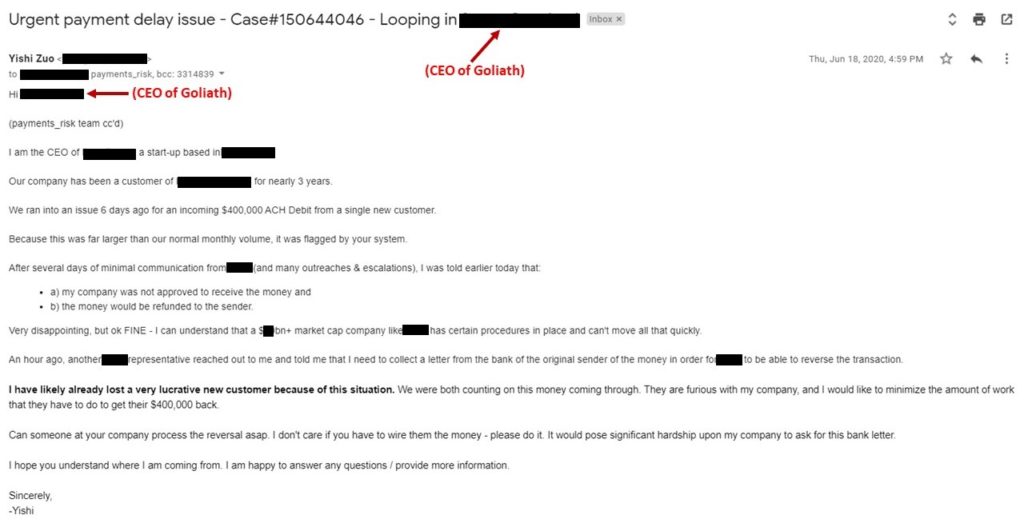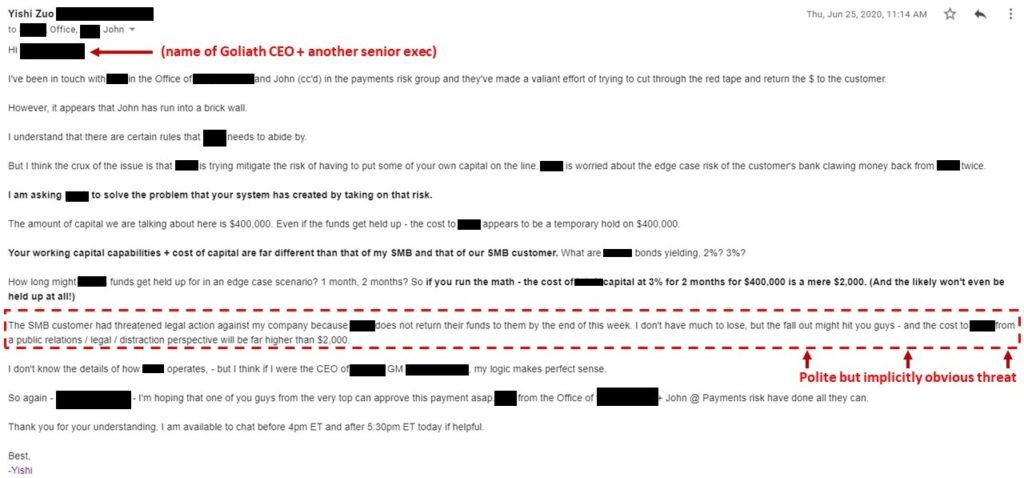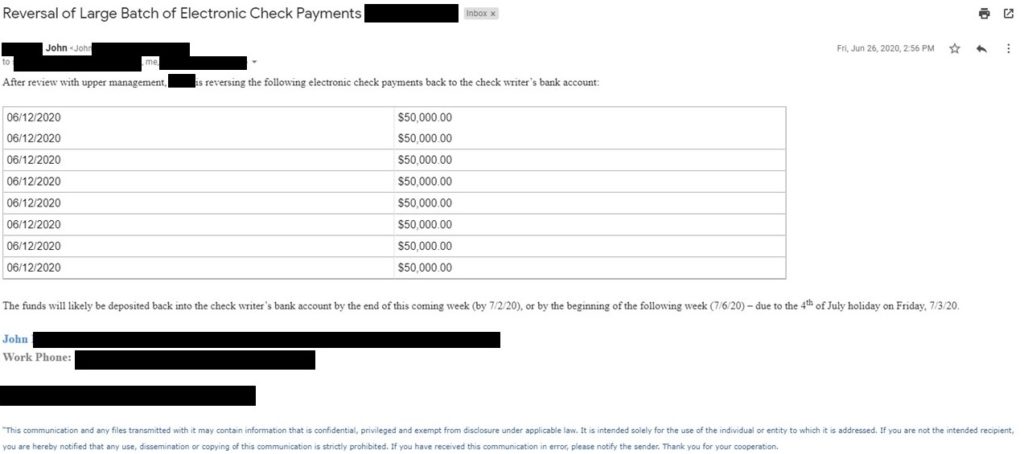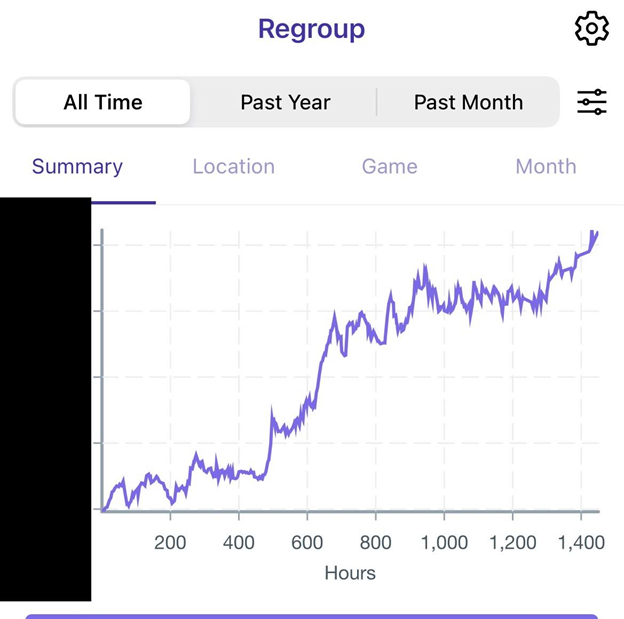In my last article, I mentioned that a large company once held $400,000 of our money hostage.
Here is a step-by-step replay of what actually happened and practical lessons learned.
If you like underdog stories, then you’ve come to the right place.
The context
A customer sends us $400,000, and for several days, the money is stuck.
Our payment processor is a $50bn+ company we can call “Goliath”. It takes a frustratingly long time for Goliath to tell us why they are holding our money hostage.
It’s because we are too small to receive a payment of that size.
Most annoying of all, Goliath will not return the money to our customer without further documentation.
Our customer is already furious at us given the delay. He has not been easy to work with. We don’t blame him. We empathize. But we know that our customer will not deal with the hassle of more paperwork.
So with few options remaining, we google the name + email of the Goliath CEO and send him the following message on the 18th:

Essentially, we outline the problem and ask the Goliath CEO to cut through the bureaucracy and refund our customer’s money immediately.
He responds 8 minutes later. Not bad for the CEO of a company that is 10,000 x bigger than us!

Lesson #1 – Escalate to the very top
In this case, Goliath’s CEO puts us in touch with their A-team and loops in another senior exec. We feel optimistic.
The Goliath A-team gives us instructions, keeps us updated, and even speaks with our customer directly.
Lesson #2 – Keep the pressure up
We actively check in with our A-team support rep every single day.
But things are still slow. From our customer’s perspective, nothing tangible is happening. His $400,000 is still stuck. He threatens legal action. He sends ALL CAPS emails, and we engage in a few tense calls.
On the 25th, 7 days after we had first cold-emailed the Goliath CEO, we receive bad news.
Our support rep tells us that there is nothing they can do unless the customer completes a series of tasks.
We know our customer will not follow those steps, but our support rep tells us that he is out of options.
Lesson #3 – Understand the crux of the issue
Critically, we’ve figured out the crux of the issue: due to the way that the American banking system is structured, there is a slight risk that our customer could receive the money back TWICE.
Goliath could theoretically be on the hook for $400,000 from its own balance sheet.
This is a VERY unlikely risk in our particular case. And Goliath is trying to further mitigate that risk.
Before you read on, I have a challenge for you. Please take a few moments and consider, “What should we do next in this situation?”
.
.
.
This is what we do. On that same day, we email the CEO again – with the following message:

Lesson #4 – Make the stakes clear
In war, a famous tactic for motivating the troops is to burn the boats. What we do here isn’t exactly the same, but it does significantly up the ante.
We make clear what is at stake:
“Our customer has threatened legal action.”
Here is our implicitly obvious threat:
“I don’t have much to lose, but the fallout might hit you.”
The first clause isn’t exactly true. We have a lot to lose. We could go bankrupt. But Goliath doesn’t care about our well-being anyway.
The second clause is very true though: if we get sued, our problem will become Goliath’s problem. And that is something they DO care about.
Translation: If we get sued, you will feel the pain.
We frame the cost accordingly:
“The cost to you from a PR / legal / distraction perspective will be far higher than my very reasonable estimate of what it might cost you to solve this problem.”
Translation: It will be far less painful for you to solve our problem before that happens.
Lesson #5 – Embrace empathy
We don’t explicitly threaten. We keep our own emotions out of it. We keep it professional.
We put ourselves in the Goliath exec team’s shoes. This is the definition of empathy. But we also transform that empathy into controlled, tactical aggression – we make it clear that things are headed to a point of no return.
Lesson #6 – Timing matters
We wouldn’t have seemed credible if we had written our initial cold email 7 days ago this way. It would have seemed irrationally aggressive, downright mad.
It’s called a point of no return for a reason – we can only do so much of this in a negotiation.
Note: a lot of things in life are negotiations in disguise. Here, Goliath has something that we want – the ability to solve our problem. And we have something that Goliath wants – the ability to prevent a PR nightmare & costly legal distraction from emerging. For a very different negotiation case study – read this article about how I recently negotiated the purchase of a new car.
Conclusion
The next day – success! Goliath’s position flips a 180. And our customer service rep specifically alludes to the hand of “upper management” in this decision.

We are told that our customer will get their money back. And everything proceeds smoothly after that.
A key takeaway here is the power of escalating tough problems to the CEO. Which we did twice in our quest.
Personally, I always appreciate it when a customer emails me directly. It means that something is broken that normal channels cannot support, and that is highly useful knowledge.
I’m not alone. Jeff Bezos is famous for responding to customer service emails.
So the next time you face a frustrating situation as a customer, I encourage you to try what I did.
For the most important inquiries, and especially if you’ve exhausted normal channels – any competent CEO will respond to you, quickly.
And as founders, we have to deal with unforeseen crises all the time. Such is the start-up life!
What would you have done differently? Shoot me a message at yz@yishizuo.com
If you are an entrepreneur with a similarly wild story to share – I’d love to hear from you as well =)
I write at the intersection of investing, entrepreneurship and personal growth.
Thank you Kushaan Shah, Art Lapinsch, and others for reviewing previous drafts of this article!



